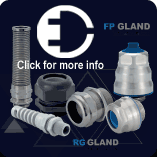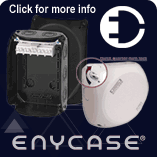|
The European Union has approved directives with a view to protecting man and environment. The member states have made these directives into national law
Directives and Laws:
WEEE
Waste Electrical and Electronic Equipment Directive 2002/96/EC of the European Parliament and the Council on used electrical and electronic devices dated January 27, 2003
Aim:
- To attain a consistent level of health and environmental protection throughout the member states.
- To harmonize the responsibility held by the manufacturers.
- To attain equivalent participation by the traders.
The member states are to employ suitable measures for ensuring that used electrical and electronic devices are treated in such a way as to prevent their entry into the waste stream. They are to set out regulations
for the dismantling, reuse and recycling of these devices.
RoHS
Restriction of Hazardous Substances electronic equipment Directive 2002/95/EC of the European Parliament and the Council on restriction of use of certain hazardous substances in electrical and electronic
equipment dated January 27, 2003.
Aim:
- To reconcile the legal regulations of the member states on restriction of use of hazardous substances and electrical and electronic equipment.
- Substance bans and restrictions.
The member states guarantee that from July 1, 2006, use of the following substances in electrical and electronic equipment will be restricted:
- Lead
- Mercury
- Cadmium
- Chromium VI
- Polybrominated biphenyl (PBB)
- Polybrominated diphenylether (PBDE)
Law on the use, return and environmentally-compatible disposal of electrical and electronic equipment.
ElektroG (Electrical and Electronic Equipment Act) March 16, 2005. This Act enforces the EU Directives 2002/96/EC and 2002/95/EC.
Aims:
- To avoid waste.
- To reuse and/or recycle the materials from this waste.
Scope
This Act applies for all electrical and electronic devices that fall under certain categories, insofar as they are not part of another device not covered by the scope of this Act.
Orientation Aid
| Requires electrical current to fulfill its primary function? |
|
 |
| Product is not governed by ElektroG |
|
 |
|
|
| Working Voltage greater than 1000 V - AC or greater than 1500 V - DC |
|
 |
| Product is not governed by ElektroG |
|
 |
|
|
| Does the component have an independent function? |
|
 |
| Product is not governed by ElektroG |
|
 |
|
|
| Does the device fall in one of the 10 categories of ElektroG? |
|
 |
| Product is not governed by ElektroG |
|
 |
|
|
Is the device used for military purposes or to protect significant safety interests?
Is the component a fixed location, large scale industrial tool or part of a fixed location system?
Do other legal regulations apply (e.g. used vehicle regulations, battery provision)? |
|
 |
| Product is not governed by ElektroG |
|
 |
|
|
| Product is governed by ElektroG |
|
|
|
Substance bans
§ 5 from ElektroG (RoHS)
It is forbidden to bring into circulation new electrical and electronic devices containing more than 0.1 percent by weight of lead, mercury, hexavalent chromium, polybrominated biphenyl (PBB) or polybrominated
diphenylether (PBDE) for each homogenous material or more than 0.01 percentage by weight of cadmium per homogenous material. Clause 1 does not apply for category 8 and 9 electrical and electronic devices nor for
electrical and electronic devices brought into a member state of the European Union for the first time before July 1, 2006. Nor does it apply for spare parts for the repair or reuse of electrical and electronic
devices brought into circulation for the first time before July 1, 2006.
Definition
The majority of our products are not governed by the ElektroG (WEEE/RoHS), as they do not have an independent function. As the possibility of our customers using our products in devices that are governed by the
ElektroG, and as such are declarable, cannot be ruled out, we have decided to mark in this catalogue the products that either comply with the limit values indicated in accordance with ElektroG (WEEE/RoHS) §
5 and/or do not infringe provisions of the ElektroG (WEEE/RoHS).
|

















